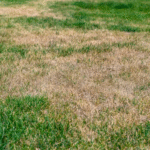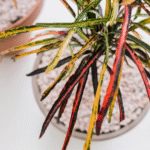Lamb’s ear is a soft and fuzzy plant that looks and feels like the ear of a lamb. Its real name is Stachys byzantina, but most people just call it lamb’s ear. This plant is very popular in gardens because of its silvery-green leaves and its ability to grow in many places. Lamb’s ear is a great choice if you want a plant that is easy to care for and adds a soft, pretty texture to your garden. In this article, we will learn how to grow and care for lamb’s ear in a simple and clear way.
What Makes Lamb’s Ear Special
Lamb’s ear has thick, velvety leaves that feel like soft fabric. The leaves grow low to the ground and spread out, making it a good ground cover. In late spring or early summer, lamb’s ear can grow tall flower spikes with small purple or pink flowers. Some gardeners grow it for the flowers, but many grow it just for the leaves.
Lamb’s ear is great for borders, flower beds, rock gardens, and even as an edging plant. It can grow in many types of soil and weather, and once it is established, it doesn’t need much water or care.
Choosing the Right Spot
Lamb’s ear likes to grow in sunny places. It does best in full sun, which means it needs at least 6 hours of sunlight each day. It can also grow in partial shade, but it may not be as full or bright in color. In shady spots, it might get leggy or floppy.
Pick a spot in your garden where the plant will get good airflow. This helps prevent problems like mold or rot, which can happen if the leaves stay wet too long.
The Best Soil for Lamb’s Ear
Lamb’s ear grows best in well-draining soil. This means water should not stay in the soil for a long time. If the soil is always wet, the roots can rot, and the plant will get sick.
If your soil is heavy or full of clay, you can mix in sand or small stones to help with drainage. Lamb’s ear does not need rich or fancy soil. In fact, it grows better in soil that is a little dry or sandy. It also likes soil that is slightly acidic or neutral.
How to Plant Lamb’s Ear
You can plant lamb’s ear in the spring or early fall. Dig a small hole in the soil and place the plant so that the top of the root ball is level with the ground. Gently press the soil around the plant and water it lightly.
If you are planting more than one lamb’s ear plant, leave about 12 to 18 inches of space between each one. These plants spread out as they grow, and they need room to breathe.
Watering Tips
Lamb’s ear does not need a lot of water. It is a drought-tolerant plant, which means it can survive with little water once it is settled in your garden. Water the plant when the soil feels dry to the touch, but do not let the soil stay wet.
During hot summer days, the plant may need a little more water, especially if it is still young. Be careful not to water the leaves. Try to water at the base of the plant. Wet leaves can lead to mold, rot, or disease.
Temperature and Climate
Lamb’s ear grows well in many climates. It is a hardy plant that can survive in areas with cold winters and hot summers. It grows best in USDA zones 4 to 9. In warmer zones, it may stay green all year long. In colder areas, it might die back in winter but come back in spring.
This plant does not like very humid weather. In places with high humidity, the leaves may get soft or turn brown. If that happens, trim off the damaged leaves and make sure the plant has enough space and air.
Pruning and Cleaning
Lamb’s ear does not need much pruning, but cleaning up the plant helps keep it healthy and neat. In spring, remove any dead or old leaves from the winter. This will help the new growth come in stronger.
In summer, if the flower stalks grow and you don’t like the way they look, you can cut them off. This helps the plant focus its energy on the leaves. You can also trim the edges if the plant spreads too much or starts growing into other plants.
Fertilizing
Lamb’s ear doesn’t need much fertilizer. It actually prefers poor soil, and too much fertilizer can cause it to grow weak and floppy. If you want to feed it, you can use a small amount of balanced fertilizer in the spring. Just sprinkle it lightly around the base of the plant and water it in.
Propagation: Growing More Plants
Lamb’s ear is easy to spread and grow more of. You can divide the plant in the spring or fall. To do this, dig up the plant carefully and pull apart the clumps into smaller sections. Each section should have roots and some leaves. Replant the sections in a new spot and water them well.
You can also grow lamb’s ear from cuttings. Take a piece of stem with a few leaves, dip the end in rooting hormone (if you have it), and plant it in moist soil. Keep it in a bright spot but out of direct sunlight until it starts to grow.
Common Problems and How to Fix Them
Lamb’s ear is a tough plant, but it can still have problems sometimes. The most common issues come from too much water or poor airflow.
If the leaves start turning black or mushy, the plant may be getting too much water or not enough air. Remove the damaged leaves and give the plant more space.
Sometimes, lamb’s ear can get powdery mildew, a white, dusty fungus on the leaves. This usually happens when the weather is damp. Trim affected leaves and try not to water the leaves directly.
If slugs or snails appear, they may chew on the soft leaves. Use natural slug control methods like crushed eggshells or organic slug bait to protect the plant.
Using Lamb’s Ear in the Garden
Lamb’s ear is not just pretty—it’s useful too. It works well as a border plant along walkways and flower beds. Its soft leaves give a nice contrast to green or bright-colored plants. You can also use it in rock gardens or dry areas of your yard where other plants don’t grow well.
Some people even grow lamb’s ear in containers or pots. If you do, make sure the pot has drainage holes and use a well-draining soil mix.
Is Lamb’s Ear Safe for Pets?
Lamb’s ear is not known to be toxic to pets, but it’s still a good idea to keep dogs or cats from chewing on it. The fuzzy leaves may cause a mild stomach upset if eaten in large amounts. If you have curious pets, plant lamb’s ear in a spot they can’t reach easily.
Final Thoughts
Lamb’s ear is a charming and easy-to-grow plant that adds softness and beauty to any garden. With its silvery leaves, low water needs, and strong nature, it’s a perfect choice for both new and experienced gardeners. Just give it sunlight, space, and dry soil, and it will reward you with years of low-maintenance beauty.
Whether you grow it in your yard, along a path, or in a pot, lamb’s ear is sure to bring a soft, peaceful touch to your garden. It’s a plant that doesn’t ask for much but gives a lot in return.







Leave a Reply